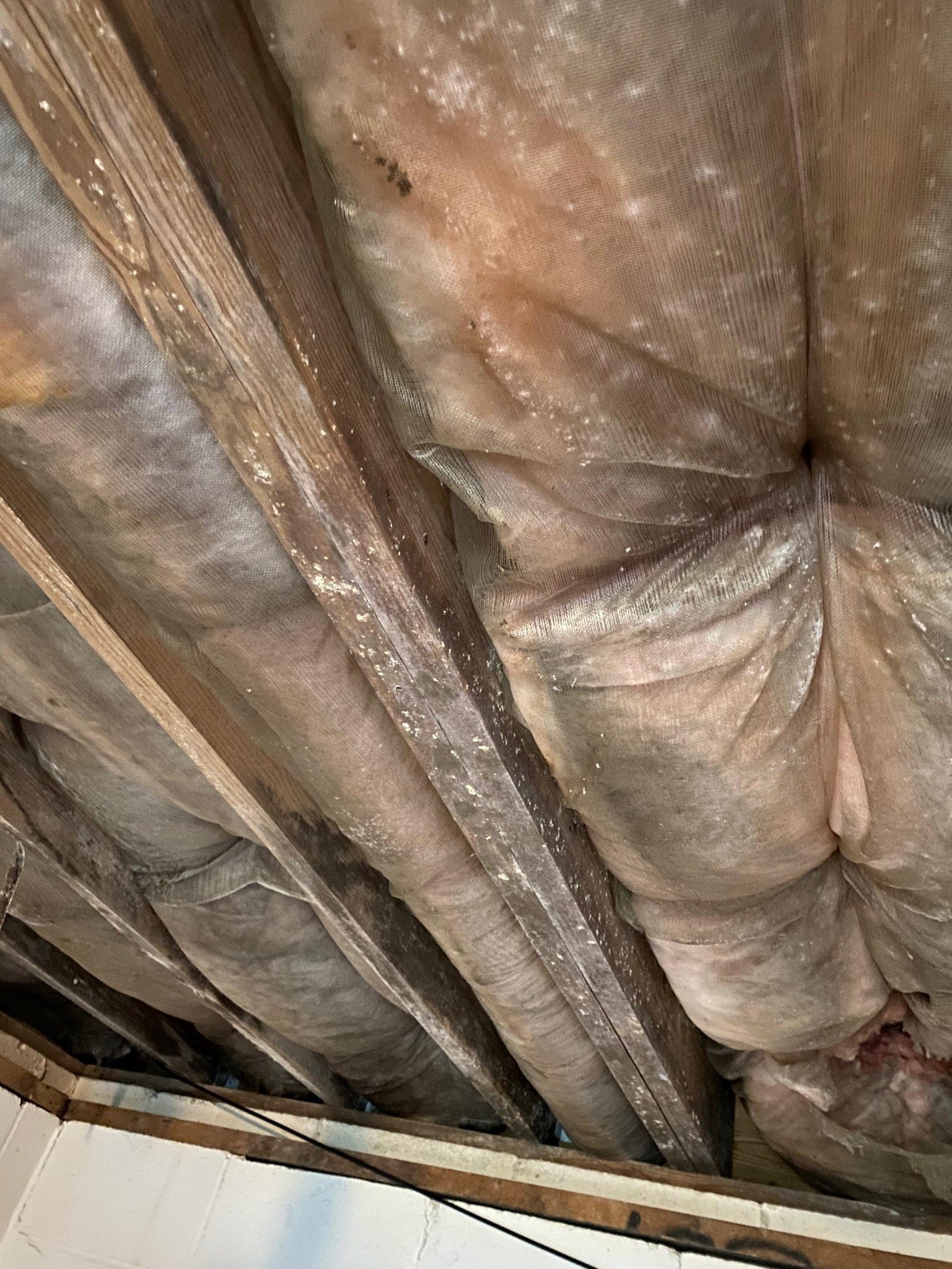
Crawl spaces are meant to provide easy access to plumbing, wiring, and structural components. But while they sit out of sight and out of mind for most homeowners, these small, dark spaces can quietly develop major foundation problems — problems that affect your entire home.
From excessive moisture to rotting support beams, soil movement to pest intrusion, crawl space foundations are especially vulnerable to damage if not monitored and maintained. And when issues go unchecked, they can lead to sagging floors, cracked drywall, mold growth, and serious structural instability.
In this article, we’ll uncover the most common crawl space foundation issues, explain why they’re so dangerous, and walk through the professional solutions Seal-Tite Basement Waterproofing uses to restore safety and stability from the ground up.
🔑 Key Takeaways
- Crawl spaces are prone to moisture buildup, wood rot, and soil movement — all of which can affect your home’s structural stability.
- Signs of crawl space issues include bouncy floors, musty odors, sticking doors, and interior cracking.
- Poor drainage, inadequate supports, and lack of encapsulation are major risk factors.
- Professional repair involves moisture control, structural reinforcement, and foundation stabilization.
- Ignoring crawl space problems can lead to costly whole-home damage.
What Is a Crawl Space Foundation?
A crawl space foundation elevates your home a few feet above the ground using piers or short foundation walls. Unlike a full basement, it provides limited height (often 1 to 3 feet) beneath the floor system.
These spaces allow for:
- Easy access to utilities
- Ventilation under the house
- Affordability vs. full basements
But they also introduce unique risks — especially in areas with high humidity, expansive soils, or poor drainage.
Why Crawl Spaces Are Vulnerable
1. Exposure to Moisture
Moist air can enter through vents, rise from the ground, or seep through unsealed walls. This leads to:
- Wood rot in floor joists
- Mold growth
- Rusted metal supports
2. Shifting Soil or Poor Compaction
Crawl space piers often rest on small footings. If the soil beneath them shifts or settles, the entire floor system above becomes uneven.
3. Inadequate or Failing Supports
Over time, wood posts and concrete blocks used to support the home can:
- Lean or tilt
- Sink into soft soil
- Crack under stress
4. Pest Intrusion
Openings in the crawl space invite rodents, insects, and termites — which damage insulation, wood, and wiring, often without being noticed for years.
5. Lack of Encapsulation or Vapor Barrier
Without a moisture barrier or crawl space encapsulation, humidity builds up, promoting decay and weakening the foundation structure.
Signs Your Crawl Space Foundation Has Problems
While you may not enter your crawl space often, your home will show signs of trouble if problems are developing beneath:
| Sign | What It Suggests |
|---|---|
| Bouncy or sagging floors | Weakening of floor joists or sinking piers |
| Cracks in interior walls or ceilings | Shifting supports or uneven movement |
| Musty odors or high humidity | Moisture buildup in crawl space |
| Sticking doors or windows | Foundation distortion transferring to frames |
| Visible mold on baseboards or walls | Rising dampness from below |
| Cold floors in winter | Lack of insulation or crawl space air leaks |
These signs may appear gradually — but they almost always worsen with time.
Real-Life Example: The Hidden Cost of Crawl Space Neglect
A homeowner in Botetourt County, VA, contacted Seal-Tite Basement Waterproofing after noticing that their dining room floor had become soft and slightly sloped. They also complained of a persistent musty odor in the home — despite regular cleaning.
An inspection revealed:
- Several wooden crawl space support posts had rotted at the base.
- The crawl space had no vapor barrier and was absorbing ground moisture.
- Mold was growing on the floor joists and insulation.
Solution Provided:
- Removed rotted supports and installed adjustable steel jacks on new footings.
- Installed a full encapsulation system with vapor barrier and dehumidifier.
- Treated mold and sealed vents to block future humidity entry.
The homeowner gained a safer, healthier home and a floor system they could trust again.
Professional Crawl Space Foundation Solutions
At Seal-Tite, we approach crawl space repairs by solving the source of the problem — not just the symptoms.
1. Crawl Space Encapsulation
- Seals the entire crawl space with a heavy-duty vapor barrier
- Optional dehumidifier installed for long-term moisture control
- Eliminates ground moisture intrusion and mold risk
2. Support Beam and Joist Repair
- Replaces damaged wood
- Installs steel supplemental beams for extra strength
- Ensures even load distribution across the structure
3. SmartJack® Crawl Space Support System
- Adjustable steel jacks installed on engineered footings
- Designed to support and lift sagging floor joists
- Ideal for correcting uneven floors or bouncy rooms above
4. Soil Stabilization and Drainage Solutions
- French drains, sump pumps, and exterior grading prevent future water intrusion
- Prevents erosion and supports long-term footing stability
5. Insulation and Vent Sealing
- Closed-cell insulation or foam board options for temperature and moisture protection
- Vent sealing eliminates humid air infiltration
Why You Shouldn’t Ignore Crawl Space Problems
Even if you never enter your crawl space, its condition directly impacts your home’s:
- Structural integrity
- Indoor air quality
- Energy efficiency
- Resale value
Moisture, rot, and sagging floors don’t stay contained. Over time, they spread upward, affecting framing, drywall, finishes, and your family’s comfort.
FAQs: Crawl Space Foundations
Is it normal for floors to bounce in older homes?
Not always. While some flex is normal in older framing, excessive bounce can mean foundation or support failure in the crawl space.
Can I check the crawl space myself?
You can, but it may be dangerous if supports are failing or mold is present. A professional inspection is safer and more thorough.
How long does crawl space encapsulation last?
A properly installed system with dehumidification can last 25+ years with minimal maintenance.
Will insurance cover crawl space damage?
Generally not if caused by long-term neglect or moisture. Some policies may cover sudden damage like burst pipes.
Can I sell my home with crawl space issues?
It’s possible, but buyers will likely request repairs or reduce their offer — especially if inspections reveal sagging floors or mold.
Conclusion: A Neglected Crawl Space Can Bring Down the House
Just because you don’t see your crawl space every day doesn’t mean it’s not affecting your home. In fact, most homeowners only discover crawl space foundation problems after they’ve caused visible — and costly — damage upstairs.
Don’t wait for soft floors, moldy air, or cracked drywall to appear. With professional inspection, support reinforcement, and long-term moisture control, you can protect your home from the ground up.
If you suspect crawl space issues or haven’t had an inspection in years, contact Seal-Tite Basement Waterproofing. We’ll uncover hidden problems, recommend the right repairs, and make sure what’s under your home is working for you — not against you.

Seal-tite Basement Waterproofing Co. is a full service basement environment contractor. We carry an A+ Better Business Bureau rating. We repaired over 40,000 homes and structures in Virginia, West Virginia, Tennessee, and North Carolina. We are fully insured and licensed. We have worked in all types of locations, including residential and commercial locations, government agencies, colleges, hospitals, churches, and condo associations.
Seal-tite® offers a lifetime transferable warranty. We carry a Class A Contractor’s License and we are fully insured. Our satisfied customers range from government agencies to businesses, hospitals, colleges, churches, and thousands of homeowners. Your home is probably the single largest investment you will make in your lifetime. Don’t wait, call Seal-tite® to help make your home dry, safe and livable.

